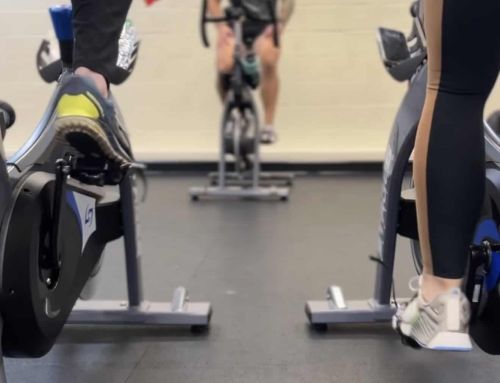By The One on One Team
Last Updated: 10/8/25
Understanding Muscle Tightness and How to Create Real Lasting Relief
We’ve all felt that nagging tightness, hamstrings that never seem to ease up, or traps that feel tense no matter how often you stretch. Stretching may bring momentary relief, but the tightness always comes back. Why? Because the root issue isn’t usually a short muscle, it’s your nervous system.
What’s Really Going On?
The word “tight” makes it sound like a muscle has physically shortened. In reality, most tightness comes from increased muscle tone, which is how much your nervous system keeps a muscle “switched on,” even at rest.
Think of it like a dimmer switch that never fully shuts off. Your body uses this strategy to protect a joint when it senses weakness or poor stability. If your glutes, core, or mid-back aren’t pulling their weight, the nervous system calls in backup. Muscles such as the hamstrings, hip flexors, or upper traps then become overactive and tense, creating that constant feeling of stiffness.
That is also why stretching only gives short-lived relief. Research shows it may temporarily increase motion, but it does not resolve the nervous system’s protective response. If weakness or poor stability is the real issue, stretching alone will not convince your body to let go.
What Works Instead
So, what actually helps? Instead of tugging endlessly on muscles that don’t want to release, the key is to change the message your nervous system is sending. That requires a two-part strategy: calm the overworked tissues and wake up the underactive ones.
Here’s how:
- Release overworked tissue
Tools such as foam rollers, massage balls, or hands-on work provide direct input to the nervous system. When you slowly sink pressure into a stiff area, it signals to the body that it is safe to relax. Think of it as hitting the reset button on a muscle that has been stuck on high alert. - Breathe deeply
Breathing is one of the fastest ways to influence your nervous system. Pairing tissue work with calm, steady breaths, inhaling through the nose and exhaling slowly through the mouth, amplifies the release effect. Your brain interprets slow breathing as a green light to dial down tension. - Strengthen and stabilize
This is the piece most people skip, and the reason tightness keeps coming back. Once the overworked muscle has released, you need to reinforce the change. Strengthening the supporting muscles, such as the glutes, core, and mid-back, provides the stability your body was craving in the first place. With stronger foundations, the nervous system does not feel the need to keep backup muscles locked on.
When you combine these steps, you are not just loosening tissue in the moment. You are teaching your body to move differently with better balance, coordination, and resilience.
The Bottom Line
Muscle tightness is not about muscles being too short. It is your nervous system protecting a joint when it senses instability. The most effective fix is a three-part approach: release overactive tissue, use breathing to signal safety, and strengthen the supporting muscles. Done consistently, this not only helps you feel looser in the moment but also builds long-term ease and resilience.
Ready to move beyond tightness? At One on One, our fitness professionals specialize in identifying the real cause of stiffness and designing programs that blend tissue work, breathing, strength, and stability. Reach out today to schedule a consultation and discover how good it feels to finally move freely again.




